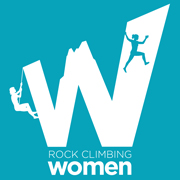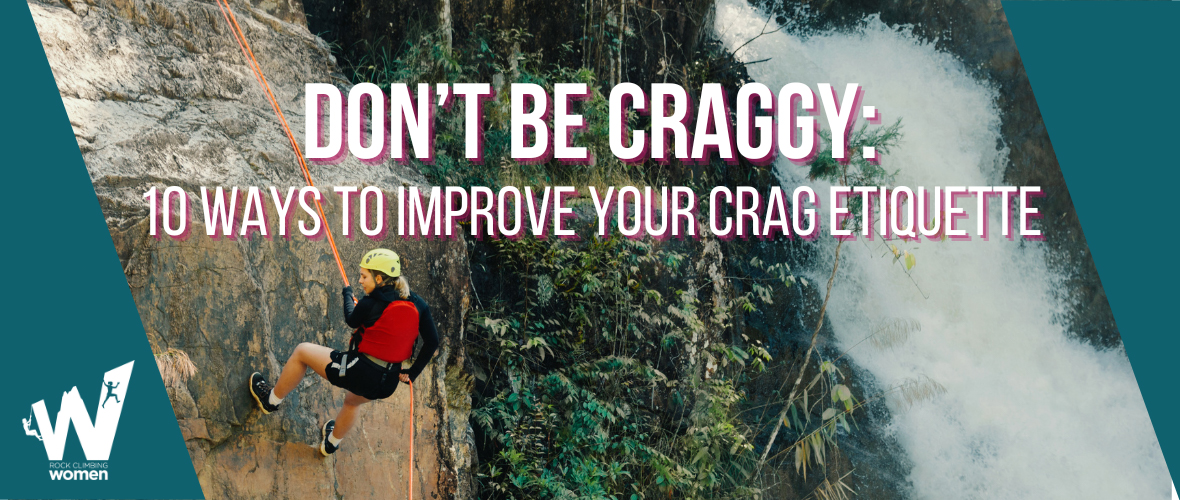Bouldering in a climbing gym, top roping, trad climbing, or climbing at the crag all come with their own set of non-spoken climber rules.
Luckily, climbers are some of the calmest people on the planet, so chances are if you unknowingly commit a climbing faux pas, they’ll let it slide.
Still, it’s best to know the ins and outs so you can avoid these controllable accidents.
Tie in and let’s rope up for 10 unspoken acts of crag etiquette.
1. Pack in, pack out
This is the biggest and most important rule of climbing etiquette — whatever you bring in, you should bring out.
“Take only photos, leave only footprints.”
If you see trash around the climbing area, pack some of it out when you leave.
It’s always great to leave an area better than you found it.
We want these areas to be maintained and climbable for years to come — let’s do our due diligence to keep them clean and wild.
2. Keep the noise natural.
Whenever you hit up a crag, it’s tempting to crank your favorite tunes and get your climbing on.
We’ve all done it and we all will do it.
However, when it comes to climbing outside, minimize noise when possible when there are others around.
Climbing is a zen sport for a lot of climbers; so, although listening to Usher’s “Confessions” on repeat might be your jam, it is disrespectful of people climbing around your area.
3. Don’t spray your beta.
Not everyone wants to know how to climb the route the way you climb a route, and that’s okay.
If another climber asks for some help on the route, by all means, fire away.
Now, if you’re just shouting random beta from a boulder in the distance to an unknown climber, that’s crossing a line.
4. Do your research pre-climb.
It’s vital (and legally protective) to do your research on the climbing area before you hike in.
Some state parks don’t allow climbing chalk as it damages the natural environment.
National parks, state parks, and recreational areas all have their own set of rules and requirements.
In some instances, you could be heavily fined for damage to the natural environment if you bolt, chalk up, or climb out of designated areas.
5. Don’t hog a route.
We get it — some routes take time. Other climbers understand that and it’s not a problem.
But if you spend all day on one route area, you may rub some people the wrong way.
Take a break in between climbs to let your muscles rest and allow other climbers to make attempts on the route.
The general rule of thumb is that you should be climbing whatever route you have a top rope set up on.
If you have multiple routes with ropes hung to mark your territory but you’re slamming down lunch for an hour, pull some ropes and give your fellow dirtbags a go!
An added bonus? You could make some friends out of the deal.
6. Don’t distract a belayer.
When you see a climber belaying their buddy on a route, it’s alright to give a passing “hey” or ask about the route, but don’t linger.
Distracting a belayer when another person is climbing is an unfortunate blend of dangerous and disrespectful.
7. Keep your gear nearby.
Unloading and “moving into” a boulder is bad taste because it limits climbing on surrounding projects.
Keep your gear below you when you’re bouldering instead of placing three different crash pads around the boulder.
If you’re fine with other climbers using your crash pads to practice their projects, then so be it — but inform them so they know the surrounding routes are fair game.
8. Do number two, with you.
As unflattering as it can be to trek out with a poop bag, it’s the right thing to do.
Pooping around the climbing site is a disservice to those around and gets smelly. Not to mention, nobody wants to climb on a poopy route.
Peeing in the wild is a bit of a different story.
Control your stream and for the love of all things climbing, don’t pee your initials on nearby boulders, someone will climb these rocks, people!
9. Leash up Fido.
If dogs are allowed at the crag (and be sure to check first), keep them leashed up so they don’t bother other climbers.
If your pup needs to use the loo outside, clean up after them.
Not only does leashing your dog protect you from losing them but it also keeps the wildlife safe!
10. Have fun, just don’t hurt anybody.
Enjoy your climb, practice crag etiquette, and don’t be craggy!
Remember to treat fellow climbers as they are, fellow climbers.
Never climb under another climber, and always pack out whatever you pack in (and, one more time for the people in the back: poop included!).
Climbing is such a wonderful sport and a lot of the responsibility in maintaining outdoor areas relies on us. As always, we’ve got you covered on all things crag etiquette, climbing tips, and new gear with our RCW Newsletter. Catch ya at the crag!
McKenzi Taylor founded Rock Climbing Women in 2013 after moving to a new city as a new climber seeking more climbing partners (and new friends!). Since her first taste of climbing in Spearfish Canyon, SD, McKenzi has been at the rock face seeking and sharing the thrill of climbing. She credits the support of a consistent climbing partner and community as the motivation to continue developing her skill, whether it’s trad, sport climbing or bouldering. A full-time business owner and mother, McKenzi’s on a mission to get her kids outside and learning to adventure alongside her.


